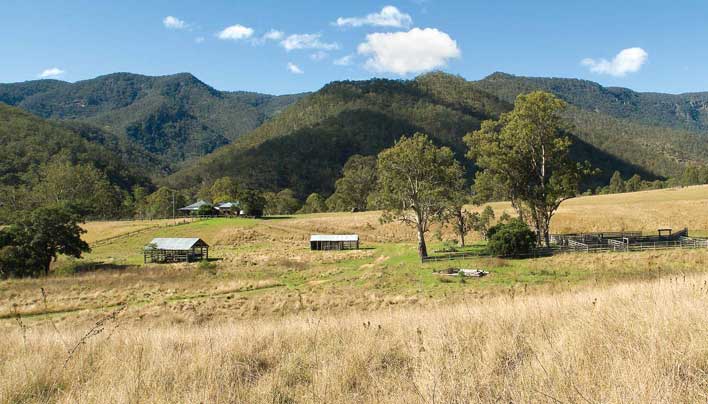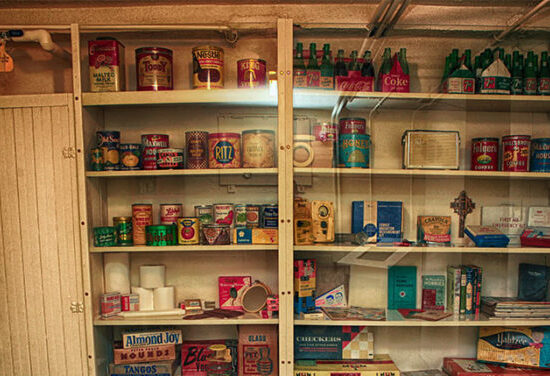
If the world goes to hell in a hand basket you may wish at some point that you had hidden supplies or items that you don’t want found. What if there are confiscations of gold like there were back in 30’s when President Roosevelt signed Executive Order 6102? What if you have a simple home robbery? What if you are forced to evacuate without enough time or the ability to take all of your valuables with you? What if there is a relatively normal “Natural Disaster” that blows your house away with all of your stuff?
These are all compelling reasons to plan for and create your own Survival Cache. A survival Cache (pronounced like Cash) is just a fancy sounding word for a hiding spot. Preppers for years have been devising new ways to bury items that they may need. Actually, burying treasure isn’t a new concept by any stretch of the imagination. People used to bury prized items all of the time. We didn’t even keep money in the bank until relatively recently and by that I mean history of the world relatively. If you take precautions, storing a cache or even multiple caches could give you supplies you need (like Hunger Games) or keep valuables safe from those who would try to take them.
Plastic buckets like this hold a lot of supplies.
What should you put in your survival cache
This is the million dollar question isn’t it? Everyone will have their own ideas and needs and you don’t have to keep everything in one single cache. Actually, I would recommend you don’t if you have a lot of items. Burying items in a cache is useful in the scenarios I mentioned above, but they can also be used to store supplies along your route if you have a long distance to drive. Let’s say you are living in the suburbs and your plan was to Bug Out if anything serious started happening, but your retreat location was 400 miles away. You could bury fuel and additional food in a cache half-way to your destination. This would give you the ability to refuel your Bug Out Vehicle along the way. That is a great plan if you have a long distance to travel and for some reason, the gas stations are no longer operating. As long as you have properly stored your fuel for the long term, it could mean the difference between driving to your retreat and walking.
That makes sense for caches stored along a route, but what about something close. I know some preppers who are going to be storing gold and silver in buried caches. Others are going to bury firearms, first-aid supplies, maybe a change of clothes, first-aid kits and some food. This type of well-rounded cache would seem to make great sense if you are bugging out or have some fear that the items you store would be confiscated as in the case of firearms or precious metals.
The contents of your own survival cache should be designed to address the need of why you are hiding the cache in the first place. If you are looking for a resupply type of option, then fuel, ammunition and food might make the most sense. If you are simply trying to hide valuables, maybe you don’t worry about food at all. Design the cache to give you what you think you will need the most if you have to go and reclaim it.
How to protect the items in your survival cache
The topic of how to actually build a survival cache will be covered in another article. If you are looking for construction details, there are tons of YouTube videos out there. Regardless of the construction methods of your cache, you will want to ensure that whatever you store in the cache is safe and in the same condition as when you left it.
A well stocked cache can give you vital supplies to survive.
The items you store in the cache and your cache location are going to dictate a lot of what you need to consider for protection. Are these items that will rust like weapons or ammo? Do you live in a humid climate or plan to bury your cache underground? Virtually any place you can store a survival cache is going to be prone to the elements unless you seal it in concrete and that kind of defeats the purpose of hiding it in the first place.
Water damage is I think the primary concern for anyone who is storing a cache. There are tons of “waterproof” caches you can build or even purchase but water has a tricky way of finding any crack if given enough time. Ideally you want to hide your cache in a location that is not going to be exposed to an excessive amount of water and ensure the contents inside are adequately protected and that your survival cache container has as water tight a seal as possible.
All of the items in your cache should be stored in plastic. Smaller items can be stored in ziploc bags and I would actually recommend at least two ziploc bags at a minimum. The freezer Ziploc bags are a heavier plastic and as long as abrasion isn’t an issue, which it shouldn’t, these will keep the water out nicely. I have also heard of people who go the next step and shrink-wrap items on top of the plastic. I might do this with a firearm for extra protection.
For firearms specifically, I have heard of people burying disassembled rifles coated in axle grease and packing a cleaning kit. I don’t know if you have to do all of that, but an excessive amount of lubricant would be very wise. For a pistol I would completely coat the weapon in your lubricant of choice, place the gun in a bag. Place that bag into another Ziploc bag and that should cover you unless you have a very leaky cache container. Into the container I would add several bags of desiccant. I would say the same for ammunition and any spare metal parts I have. There are waterproof bags available online with much denser plastic, but in most normal circumstances, I think two heavy-duty freezer quality Ziploc’s should be up to the challenge.
Quick and easy food grade items like MRE’s or canned food aren’t going to last as long as a hunk of metal, so you can’t really stick these in a tube and forget about them for 50 years. However, they should be protected in the same way, minus the gun oil of course. MRE’s already come in sealed bags, but I would still throw them in another water proof bag if possible. Clothes can be shoved into a water proof bag and as long as you don’t have your cache buried under the sea everything should stay nice and dry.
Where to hide your survival cache
So you have your survival cache of items and a container – now all you need is a place to hide it. The good news is that you literally have millions of options. The bad news is you have millions of options. Most cache’s are buried and this is because of the old adage. Out of sight, out of mind. If people don’t see your valuables they aren’t likely to find them. Of course you can hide valuables in your house as long as you choose a safe place but a survival cache usually has a different utility and needs to be handled in a more secure and hidden manner.
So, assuming you want to bury your cache, you need to try and find a location that has the following criteria:
- You will always have access to it. – Locations in cities are tough but not impossible. I would be very hesitant to hide a cache in an abandoned building. Fire or demolition could take your cache away and leave you with nothing but a sad look on your face. If you have to store this in a building try to ensure that you check on it often so you can move it if you notice it has been tampered with or if the status of the building is changing. For instance, if the building is for sale. Some people have suggested national parks as a good place to store a cache and that may work for a lot of people. They aren’t very likely to put a shopping mall or a highway through a national park.
- The landscape is not going to change significantly – This one requires some research depending on where your cache location is. If the cache is buried in your back yard, you have a lot less to worry about. If you have decided on a private piece of land, you might want to check to see that no zoning notices have been registered and before that you obtain permission. Like the example above, you don’t want to desperately need your cache only to find out they put a super Wal-Mart up last summer. Or, the land could be in a forest that is logged for trees. Good luck finding your cache if that happens unless you have a very significant landmark.
- Not in an area prone to flooding – I wouldn’t bury a survival cache in a river bank or actually too close to a river or major creek for this reason. Even if you have sealed your cache so that it is completely waterproof, there are chances your survival gear could be washed away forever. You don’t want to run to the location to grab your cache when it is a matter of life and death only to find that it is gone, probably due to that once in a century flood last year. Or maybe it isn’t gone, but its under 20 feet of water and now you have no way of getting to it since the local dive shop has burned down.
How to keep people from finding your cache
This is when it might get tricky. First you have to make sure nobody knows about your cache, then that nobody sees where you bury it and finally that nobody stumbles upon it accidentally. To keep the last thing from happening you should ensure that it is buried very well. Depending on the shape of your cache, I might dig a vertical hole instead of horizontally. To prevent people from finding it with metal detectors, you should dig your cache down very deep so that the top is 4 feet underground. You can then fill in a foot of dirt and bury an old piece of metal that you find at a junkyard. Add another 2 feet into the hole and add another piece of metal. The chances of anyone from that crazy TV show coming across your personal treasure should be remote, but this might through a random person with a metal detector off the trail. Additionally you can move large rocks over the cache location and this should prevent anyone with a detector as well.
Two is one and one is none is the old adage so I would consider having two caches you can get too if necessary. Worst case scenario, someone finds one but the chances of them finding both are next to impossible. I would make sure the distance between the two caches is significant though as in miles.
Take extra precaution when you are burying your cache. The last thing you need is for a curious person to see you walking into the woods with a big box and a shovel. If possible, you may do this at night or at a time when nobody is around in more urban settings. Depending on the location, you may draw less attention in broad daylight as opposed to night. I have often thought of going into my own yard with the headlamp on at 3 in the morning, but the chance of neighbors seeing me is still too great. I can always plant a new bush for my wife and the neighbors don’t notice me taking a little longer on the hole.
How to find your survival cache
Now that you have your survival cache buried, how will you make sure you can get back to it when you need to? In a perfect world you would know precisely where you dug your cache, but if you are hiding this along your route in unfamiliar territory, finding your way back might be more difficult. This is even more true if you are under duress.
For locations nearby, your memory and some landmarks may be sufficient. Make sure you have at least three points of reference. If you have buried your cache in the woods, I would try to locate them near a major rock on a hill off a trail. This way, you can find the trail or barring that, the hill and finally the rock. What about GPS? That works great until the grid goes down, but you can also incorporate Geocaching into your cache plans. This can give you a great way to get out of the house with your kids, learn how to read a map and check on the cache.
Maps are more foolproof if you know how to read one and have been very precise with your bearings. I would additionally take photos of the area in all seasons if possible. Also, this is not something you should set up and forget about for years. Make a point to check on your cache fairly often. You don’t necessarily have to dig it up, but you can put eyes on the location to make sure it hasn’t been disturbed.
I would dig your cache up every 5 years though to check on the contents. If this is simply a gun and ammo and you are certain it hasn’t been affected by water this might not be necessary. For clothes, food and spare boots I would check them for rot and fit and replace the food. 5 years is a long time.
Hopefully this gives you some ideas for hiding your own survival cache. I’d love to hear your comments below on your experiences with survival caches.


![The-Importance-of-Urban-Survival-Caches[1]](https://www.finalprepper.com/wp-content/uploads/2016/05/The-Importance-of-Urban-Survival-Caches1-1.jpg)
![burial-tube[1]](https://www.finalprepper.com/wp-content/uploads/2016/05/burial-tube1.jpg)


















